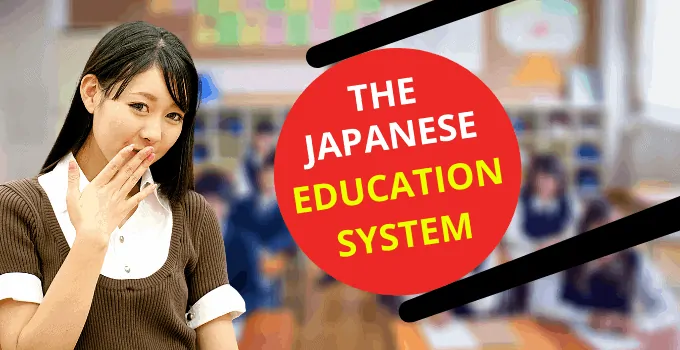In this article we’re going to do a deep, deep dive into the Japanese education system.
We’ll cover how the system is structured from pre-school to post-grad, what the classes are like, what exams there are, as well as hitting on all the major points in the history of Japanese education.
For convenience sake, I’ll start by tackling the most popular topics, mostly regarding contemporary education practices.
From there, I’ll dig in deeper to cover the history and lesser known topics of Japanese education.
Let’s begin with a super general overview…
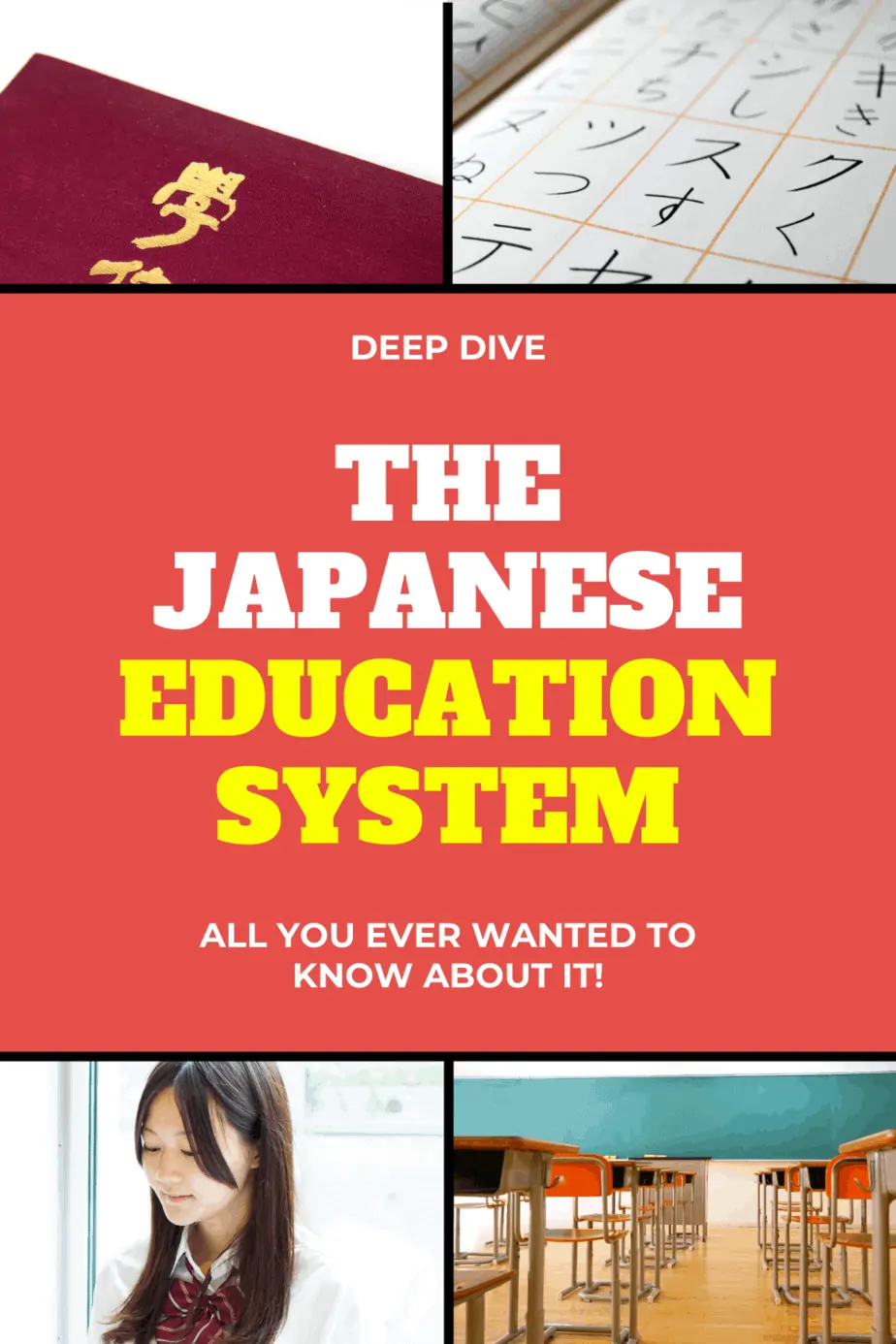
What is the structure of Japanese education before high school?
Education in Japan is very similar to what’s practiced in English-speaking countries. Many children go to pre-school (保育園; hoikuen). This is followed by six years of compulsory primary school (小学校; shogakko) and three years of middle school (中学校; chugakko). Over 90% of students go on to high school (高校; koko), which is non-compulsory. This is often followed by university (大学校; daigakko).
The Structure of Japanese Education: ages 0-6
Japanese education shares many similarities with so-called Western education systems.
Let’s go through them one by one and also cover all the important Japanese terms for them. In the next section I’ll examine each part of the system in detail, but let’s begin with an overview.
Let’s begin with nursery school, known as 保育園 (hoikuen) in Japanese. The first kanji (Chinese character) means, roughly, “guardian.”
The second means “to raise (someone).” And the third is one you’ll see in many places meaning “park.” So, in essence, it’s an open space to guard and raise children.
While not many children from 0-2 years old attend, between ages 3-5 Japan beats out the international average and the number of kids who never attend preschool is vanishingly small (less than a percent!).
There’s also preschool and kindergarten, which are collectively known as 幼稚園 (yochien). That third character is the same as before, but the first two kanji are totally different.
The first means “infancy” or “childhood.” The second reinforces the first, meaning “immature” or “young.”
Nowadays, the line between hoikuen and yochien has become a bit blurred with both offering similar services, and sometimes being housed in the same facility.
The Structure of Japanese Education: Before University
At age six children enter a period of nine years of compulsory education, known as 義務教育 (gimukyoiku).
Let’s break it down.
The first character is a broad one, meaning something like, “justice; morality; righteous.”
The second refers to “tasks” or “duties.”
The third is simple, meaning to “teach.” And the fourth we’ve already encountered just before.
Gimukyoiku begins with six years of elementary school, known as 小学校 (shogakko). Let review these characters carefully, since we’ll be seeing a lot of it again.
The first is another simple one, meaning just “small.” Then we get 学, meaning “study” or “learning.” The last one means “school” and “exam.”
Then student move on to three years of middle/junior high school, known as 中学校 (chugakko). Just one character changes, the first, this time meaning, “middle.”
Children do not have to go on to high school, though sources say at least 94% of students do go on. High school is known as 高校 (koko).
That first character just means “high.” It’s a pretty much literal translation of “high school.”
Technically, koko is an abbreviation of 高等学校 (koto-gakkou), where koto just means “high class” or “high grade.”
Alternatively, students might go into the family business, or onto another life path. Or, they might enter a 高等専門学校 (koto-senmon-gakko), or in other words a technical college.
The first two characters together mean “upper grade,” and the middle two characters mean “specialty.”
The last two I hope you remember by now as just meaning “school.” This is often abbreviated as 高専 (kosen).
These technical schools start at 15 years of age and run for five years (there are occasional exceptions where high school grads can enter in the 4th year of the program).
You get in either by recommendation, or through an exam.
Oh, and these programs are no joke.
Students get some serious education there, with opportunities to become professionally trained in such demanding fields as chemical engineering, information systems, and more.
That said, at any one time only about 60,000 students are enrolled in the 63 technical schools in Japan.
That’s a relatively small percentage of the over 3 million high school students in Japan.
A large percentage of graduates from these schools go on to even more education, or enter the workforce.
Good things lie ahead for these kids, since they’re in really high demand by some seriously prestigious companies and institutions (including the Harvard-of-Japan, University of Tokyo, aka Todai).
The Structure of Japanese Education: Entering University
Roughly 55% of the over one million high school graduates in Japan go on to attend university each year.
The system for entrance is pretty different from what many of you might be experienced with. GPA and grades don’t much matter.
All that really matters is your performance on the entrance examination.
If you knock that out of the park, you could have been a delinquent for much of your pre-college life and still get into a top university.
That said, the road is long, narrow, and very treacherous for anyone wanting to get into the school of their choice.
This isn’t like the SATs. Each and every school gives its own examination.
So, if you want to get into Todai, then you need to study for the Todai entrance exam.
Want to get into Waseda? Study for the Waseda exam. These university-specific exams are known as 二次試験 (niji-shiken).
And if you want to get into a public university, you’ll also need to pass a uniform national exam known as the センター試験 (senta-shiken).
Oh, and these exams are given just once a year. Screw up and you’ll have to wait a whole extra year to try again.
Almost as a consolation, you get a cool nickname for your failure: You become a ronin (浪人), the old term for a “masterless samurai.”
I dunno about you, but that’s a pretty cool moniker to carry around for a year just because I flunked a test.
Collectively, these entrance exams are known as 入学試験 (nyugaku-shiken).
The Structure of Japanese Education: Undergraduate
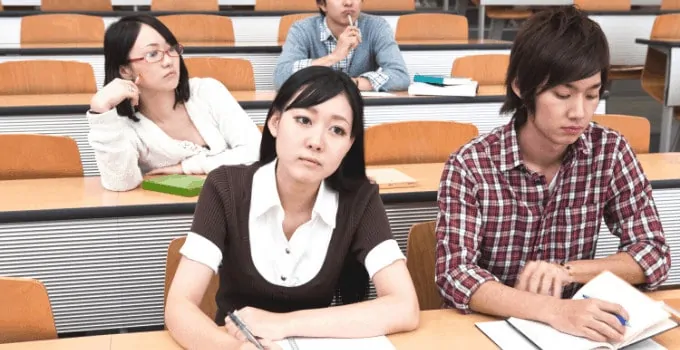
University education in Japan is pretty similar to what you’d expect from knowing about Western institutions.
The process begins (and, for many, ends) with undergraduate studies. Undergraduate school is known as 大学 (daigaku).
That first character means “big” and the second character you should recognize by now as “learning.”
You could also get fancy with things and refer to it as a “baccalaureate degree program,” which in Japanese is 学士課程 (gakushi-katei).
Gakushi is the word for “bachelor degree” and katei means “course of study.”
Now, let’s go over the three different kinds of universities in Japan.
First, there are the private universities, aka 私立大学 (shiritsu-daigaku). These are pretty self-explanatory.
The universities have no affiliation with a government body and are run privately.
One nice feature when applying to a private university is that you’re only required to take one entrance exam, the one specific to that school.
As of 2019, there are 607 private universities in Japan. If you guessed that these schools are more expensive, you’d be right, costing about $2-7000 USD more than their public counterparts (~$10-15k USD/year).
Next are the government schools, which fall under the umbrella of 大学校 (daigakko). This category is split up into two types: public and national schools.
Public schools are called 公立大学 (kouritsu-daigaku) and are run at the prefecture or city level.
Often these schools focus on coursework related to their region and work closely with local businesses.
There are 93 public universities in Japan as of 2019. These will run students about $7k USD per year.
Finally, there are the national universities, aka the 国立大学 (kokuritsu-daigaku).
These universities are funded by the national government and are the most likely to focus heavily on the sciences (I assume since they have the funding that makes it possible).
There are 86 national universities in Japan as of 2019, and they run students around $8k per year. Not bad!
The Structure of Japanese Education: Japanese “Ivies”
Any discussion of higher education in Japan would be incomplete without a quick glance at the best-of-the-best when it comes to universities in Japan.
Of the top ten, only two public institutions make the list, Waseda (早稲田大学) and Keio (慶應義塾大学).
The other eight are all national, with seven of those belonging to the prestigious “Imperial Universities” group.
The Imperial Universities are known as 帝国大学 (teikoku-daigaku), or more commonly nowadays as the “National Seven Universities,” aka 国立七大学 (zenkoku-nana-daigaku).
These seven schools are notoriously difficult to get admitted to. At the top of the heap is Tokyo University, also known as Todai (東京大学 and 東大, respectively).
Think of this as the Japanese equivalent to Harvard. Attendance at Todai is almost a golden ticket to opportunity in Japan.
The Structure of Japanese Education: Alternative Undergraduate Paths
Just like you might be familiar with, Japan has both community colleges and vocational schools as alternatives to the traditional high school to undergraduate path.
These usually last two years, although there are some three year programs.
Unfortunately, these schools don’t lead to quite as many opportunities as traditional universities or technical schools.
Of the two, community colleges leave the graduate with the least advantage, while vocational schools usually lead to decent employment, just not at any top corporations.
Community colleges are known as 短期大学 (tanki-daigaku), abbreviated as 短大 (tandai). 短 means “short” and 期 means “period of time.”
So, basically, “short period college.” The vocational schools are called 専門学校 (senmon-gakko). 専門 means “specialty” or “area of expertise.”
While these schools don’t lead to much in the way of exciting employment opportunities, just like in the West, graduates can leverage their diplomas for acceptance into undergraduate, or even graduate, university programs.
The Structure of Japanese Education: Professional Schools
Now on to graduate and professional education.
According to one source, just 7% of undergrads go on to even higher education in Japan.
Perhaps this makes sense as graduate school is not as strongly emphasized in Japan as it is elsewhere with similar educational structures.
There’s quite a lot of terms that are relevant to this subject, so let’s cover them one by one, starting with the general term for “graduate school,” 大学院 (daigakuin).
That’s just daigaku (“university”) with another character tacked on to the end, meaning “institution.”
Let’s get a little more specific and talk about masters programs. The general term is 修士課程 (shushi-katei).
The first half of that is the word for “master’s degree.” The second half means “course” or “curriculum.” Easy!
But what if what we’re talking about is a master’s as part of a doctoral program? Then we get 大学院博士課程前期 (daigakuin-hakushi-katei-zenki).
Hoooo boy, that’s a mouthful.
Let’s break it down.
The first part we already know as “graduate school.”
The next part, 博士 (hakushi), is the term for “PhD.” Then we already learned katei above—nice.
The last two characters mean “first term,” or “preceding period.” Basically, the first half of the doctoral program.
When talking about the doctoral part of the program, we only need to change a single character.
The term is 大学院博士課程後期 (daigakuin-hakushi-katei-koki). Koki means the “second term,” or “following period.”
Finally, Japanese students have the option to attend professional schools like law, medical, veterinary, dentistry, and pharmaceutical school.
Full-on, graduate-level law schools are a relatively new thing in Japan, existing only since the very start of the 21st century; however, the legal profession is anything but, with a long history and one of the most difficult professional exams on the planet.
Law school is called 法科大学院 (hoka-daigakuin). You already recognize the “daigakuin” part by now, so let’s just look at the first two characters.
The first kanji literally means “law” and the second means “department.” So, basically, “law department graduate school.”
Medical school is called 医学部 (i-gaku-bu). The first character is a common one, meaning “doctor,” or “medicine.” The second you already know a “studying,” or “science.”
The final character means “department.”
Medical education usually begins right after high school, with the undergraduate program being a direct part of the medical education.
There are four years of pre-clinical studies, followed by two years of clinical.
That makes for six years of medical school, although of course there follows professional examinations and specialization.
The naming conventions for the next few will follow the same pattern.
For example, dentistry school is called 歯学部 (shi-gaku-bu). In this case 歯 just means “teeth.”
Pharmacy school is called 薬学部 (yaku-gaku-bu), with the first character meaning “medicine.”
There’s also veterinary school, called 獣医学部 (jui-gaku-bu). This word is almost the same as the one for medical school, just tacking on the kanji for “animal” at the front.
For as difficult as Japanese can sometimes be, I love how simple some seemingly complex things often become!
The Structure of Japanese Education: Supplemental Institutions
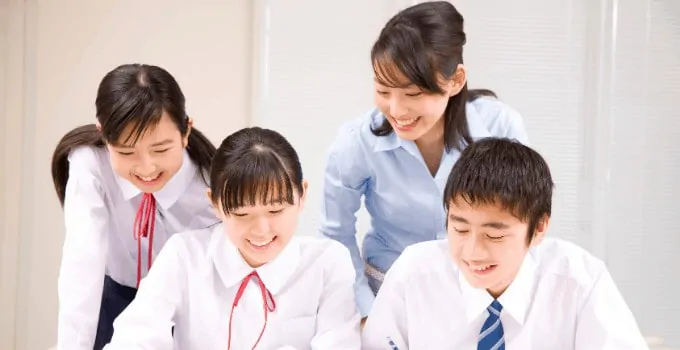
Let’s take a quick look at educational facilities that fall outside the central system.
Perhaps most familiar to non-Japanese will be “cram school,” known as 塾 (juku) in Japanese.
These are after-school programs that are entirely private and are designed largely to help prep kids for entrance examinations.
Of course, there are other forms of juku, including ones to help improve music, sports, or other skills.
Lest you think this is a new concept, the character 塾 actually comes from Middle Chinese, with my sources putting it at at least two thousand years old.
In Chinese it means “private tutelage,” which is effectively the same thing it means in Japanese (thought it’s more specific in Japanese now).
Similar to juku are the 予備校 (yobiko). The first kanji means “beforehand,” and the second means “preparation” (the third we already covered and means “school”).
So, it’s a “school for advance preparation.” These are essentially a subset of juku with a focus on helping students pass entrance exams, especially students who have become ronin due to failing on their first go-round.
Finally, let’s take a quick look at 英会話 (eikaiwa), aka English conversation schools. That first kanji is a common one, meaning “English.” 会話 just means “conversation.”
There are an incredible number of eikaiwa in Japan, and they cater to all different ages and levels. Some focus on young children, others on adults.
Some specialize in beginners, while others provide a service for those hoping to sharpen already advanced skills.
It’s a mixed bag, both in what’s on offer and how well it’s offered. Take it from me.
I spent nearly a year teaching with a popular eikaiwa and met all sorts of teachers, from the very skilled, to the utterly inept.
That said, you can throw a chopstick without hitting an eikaiwa in Japan, so people have lots of options to shop around for the teacher(s) that best meet their needs/desires.
Important Exams in Japanese Education
This will by no means be a comprehensive list. Far from it. This is just a quick overview of a handful of important tests in Japan.
大学入試センター試験 (daigaku-nyushi-senta-shiken)
This is more commonly called the センター試験 (senta-shiken), or even just センター(senta).
This is a standardized test that anyone wanting to enter a public/national university must take. Some private schools also require it.
The test is split up over two days and according to subject, with the entire thing being multiple choice.
二次試験 (niji-shiken)
This is the term for any of the school-specific entrance exams students must take in addition to the senta-shiken.
日本留学試験 (nihon-ryugaku-shiken)
This is the test given to non-Japanese people who want to enter Japanese universities. The test covers school subjects in either science or liberal arts.
日本語能力試験 nihongo-noryoku-shiken
This one will be intimately familiar to almost anyone with an interest in studying Japanese as a foreigner. This is the JLPT. There are five levels, with N5 being the easiest, and N1 being the hardest.
This test is often important for gaining employment, as well as for self-assessment.
Usually at least N2 level is required for employment in Japan (though this is not a rule, and sometime N3 suffices, and sometimes even N1 is too little).
日本漢字能力検定 (nihon-kanji-noryoku-kentei)
This is more commonly known as the 漢字検定 (kanji-kentei), and is a test even a lot of foreigners take. This is just a test of your kanji knowledge, broken down across 12 levels.
Anyone with a couple months of study under their belt could probably pass the first two levels. But to pass the final level is a true achievement.
Even a well-educated native Japanese speaker couldn’t pass the highest level without serious preparation (the third-to-last level is usually the limit for even brainy Japanese without specific study).
The kanji-kentei is used for many different reasons, including employment and ego-fluffing.
司法試験 (shiho-shiken)
I had to include this one. The Japanese bar exam. At one time this was considered the hardest professional exam in the world, with a pass rate of just 2-3%.
Things changed a bit in 2006, and the pass rate has risen to around 25% (still nearly half the pass rate of the California bar exam).
公開テスト (kokai-tesuo)
This one will be familiar to anyone who speaks English as a second language. It’s the famous TOEIC, a standardized test for the English language.
This is becoming a regular alternative to the STEP Eiken, which we’ll cover next.
実用英語技能検定 (jitsuyo-eigo-gino-kentei)
This is a standardized test of English developed inside Japan, for Japanese people.
Features of Japanese Education: Introduction
While Japanese education shares a lot of similarities with what you might be familiar with, it also has many idiosyncrasies.
Some of these you may be aware of from viewing Japanese media, but we’ll make sure to cover the interesting lingo and details behind many of the most unique features of the Japanese education system.
Features of Japanese Education: Uniforms
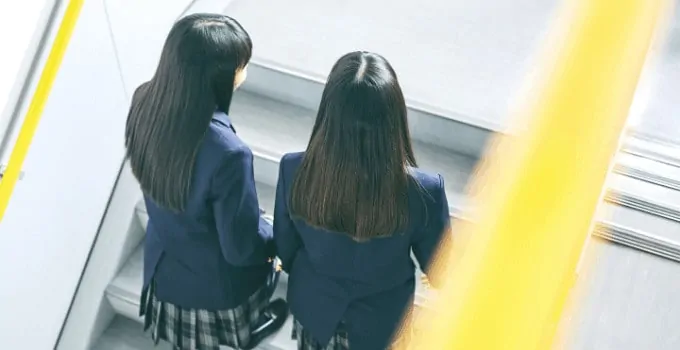
Uniform wearing is one of the most distinctive and noticeable features of the Japanese education system.
And while uniforms are ubiquitous across Japan (even into adulthood), the types of uniforms are not. Let’s take a look.
Elementary schools are one of the few institutions in Japan without a rigorous dress code (usually).
Yet, even then there are two features that you’ll always notice: the backpack and colorful hat.
The backpacks are known as ランドセル (randoseru), and are usually a single color and pretty firm (often made of leather).
These are not necessarily required by the schools, but you’ll nevertheless virtually never see an elementary schooler without one.
Why are they called “randoseru”? Good question. There doesn’t seem to be a definitive answer that I can find.
That said, a good theory is that it comes from the German word “Landser,” which means soldier. The bags worn by Landser were very similar to the ones used by the Japanese as randoseru.
The one real rule is that kids have to wear スクールハット (sukuru-hatto), aka “school hats.”
These are simple, wide-brimmed, bright-colored hats that every kid must wear to and from school. They’re usually yellow, but sometimes other bright colors like red.
Once kids get to middle school they’re required to wear some serious uniforms. These school uniforms are called 制服 (seifuku).
The first character means “law,” or “rule,” and the second character just means “clothing.”
Nowadays, you’ll see lots of students wearing Western-style Catholic school uniforms.
Not much interesting to say about that, so lets skip to the more distinctively “Japanese” uniforms, the ones modeled on Western military-wear over a century ago.
Boys’ uniforms are called 学ラン (gaku-ran) and got their start in Japanese education in 1886.
The “ran” part comes from the word 蘭, which is used to refer to the Netherlands (and, in some respects, the West at large).
The Gaku-ran is usually black, buttoned straight up to the neck, with a distinctive collar that stand straight up. This collar is known as a 詰襟 (tume-eri).
Girls often wear セーラー服 (sera-fuku), aka “sailor clothes.” These were introduced in 1920, and nowadays are mostly worn by middle school girls.
What about university? Once you get to university, you’re free! No more uniforms (well, until you get a job, that is…).
Features of Japanese Education: Clubs
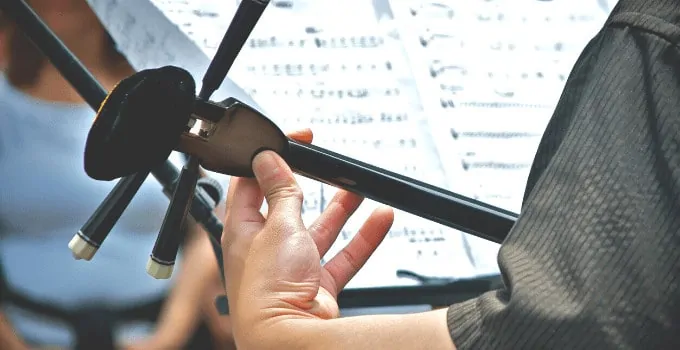
Club life, aka クラブ活動 (kurabu-katsudo), or 部活 (bukatsu) for short, is a massive part of growing up for many Japanese students, especially from middle school all the way through university.
Clubs in school can be all sorts of things.
There’s the obvious sports, but also games (shogi, go, etc), newspaper, music, dance, martial arts, photography, painting, tea ceremony, literature, and more.
And if you want to make your own club, you just need enough interested students and a teacher willing to sponsor it.
There’s two words for a school club in Japanese: クラブ (kurabu) and サークル (sakuru).
While there’s no real difference between these two terms (and they’re often used interchangeably), some anecdotal discussion I’ve found suggests that sakuru are “just for fun,” while kurabu are pretty serious.
How serious, you ask? Well, they last for hours after school ends. Kids will often (very often) come in on holidays as well.
Club activities will take precedent over family vacations even. Students will sometimes not give up on a club until it’s time to study for their entrance exams.
Clubs can be all encompassing for some students, and they in some ways function as training grounds for the similar cultural atmosphere of corporate Japan.
Of course, this varies a lot from school to school, and from activity to activity.
At one school I worked at, the volleyball team was do-or-die, hardcore.
They traveled all over the nation for competitions and racked up the wins. Those kids were practicing daily, all day and night.
On the other hand, there was the music club.
Those kids practiced for an hour or so after school and then I’d usually see them walking home with their instruments around the same time I was headed home.
Features of Japanese Education: Rei
Every elementary/middle/high school class in Japan begins the same way, with 礼 (rei). One student will lead the class in this three or four step process.
First, they call out 起立 (kiritsu), which asks everyone to stand. In some parts of Japan, this is followed by 注目 (chumoku), which calls for attention (I haven’t heard this one used a lot).
Then, they say 礼 (rei), which commands everyone to bow to the front of the room. Finally, they say 着席 (chakuseki), which tells everyone to sit back down.
Features of Japanese Education: Sports Day
This one has a really straightforward name: スポーツの日 (supotsu-no-hi). Very literally “sports’ day.”
This is a national event, although it always takes place at each school individually. It’s set for the second Monday in October to commemorate the opening of the 1964 Olympics in Tokyo.
This date may change due to weather, or even location. For example, in Hokkaido, schools usually host it earlier as by October snow is already starting to fall.
Sports Day involves lots of fun team events, like relay races, tug-of-war, basket shooting, etc. They’ll also do a small parade and play some live music.
Teachers also get involved. And, finally, awards are handed out.
Features of Japanese Education: Culture Festivals
Once are year, schools will open their doors to the public so that people can come in and see the interesting displays the students have put together.
Kids may make art, cook food, or anything that shows off their creativity.
These culture festivals are called 文化祭 (bunkasai) and are held even at preschools and universities.
If you’ve ever wanted to see the inside of a Japanese school on your visit to Japan, finding one of these events is a great way to do so.
Traditionally, these are held in November, but just like Sports Day that can really depend on the location.
Features of Japanese Education: Meals
In Japan, school lunch is usually provided in elementary and middle school, and it’s known as 給食 (kyushoku). The first kanji, in this case, means “allowance,” and the second just means “food.”
The national government sets minimum nutritional guidelines to make sure that schools are providing healthful meals to their students.
Regional governments can add more restrictions on top of that, such as to ensure that the food served is locally produced.
Usually, kids will eat in a classroom instead of a cafeteria, and the students often serve each other.
What’s on the menu? It rotates regularly, with rice, vegetables, and fish being regular staples. They’ll also serve ramen, katsu-don, and the perennial favorite curry.
Features of Japanese Education: Grading
While grades do exist in Japan, they’re not as important as they are elsewhere. If you can dominate the entrance exams, you’re all set.
That said, there are some kanji equivalents to Western grades. Let’s take a look.
90-100% = 秀 (shu)
80-89% = 優 (yu)
70-79% = 良 (ryo)
60-69% = 可 (ka)
50-59% = 認 (nin)
0-59% = 不可 (fuka)
Features of Japanese Education: The day’s routine
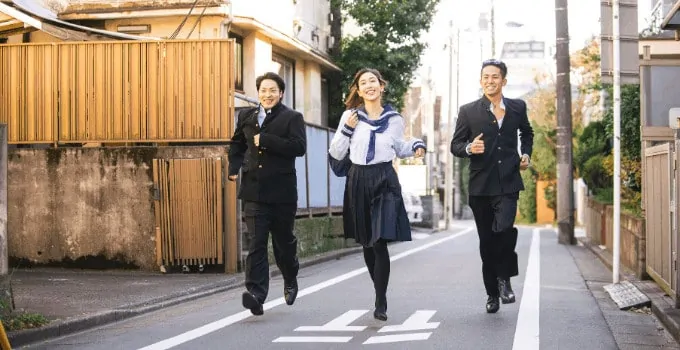
While there is variation, school days in Japan are fairly similar. They start around 8:30 am with homeroom. Classes are usually 50 minutes long.
With the exception of labs, gym activities, or the like, students stay in the same room all day and the teachers will switch out for each subject (except for in elementary school, where there is only one teacher).
Students study math, science, social studies, English, Japanese, ethics, art, and physical education.
School ends around 3:00 pm. Some high schools have Saturday school, which usually ends earlier.
Controversies in Japanese Education: Bullying, aka ijime
In Japan, bullying is known as いじめ (ijime). It can also be written in kanji either as 虐め or 苛め.
I want to be clear that bullying is not unique to Japan, nor is it even unique to schools in Japan. Bullying, in the schoolyard fashion, follows into the corporate life.
However, since it is (or, at least, has been) pervasive and starts in school, I thought I should address it.
The discussion around this topic suggests that it may not be as big of a deal as it’s made out to be, or that it is in fact a huge problem. It’s, frankly, a bit hard to get to the bottom of.
That said, bullying is featured in Japanese media a lot, so it’s worth taking a peek at, just to cover our bases.
The Japanese Ministry of Education (MEXT) has been tracking data on bullying since 1985.
According to those reports, over 66% of Japanese children have experienced bullying.
It’s gotten bad enough that 2013 saw the passing of a law which requires schools to seek out and prevent bullying.
That “seek out” part is especially important, as people—including teachers—knowing about, but ignoring, bullying has been a part of the exacerbation of the problem over the years.
I want to readily admit that I am not an expert in bullying in Japan, nor anywhere else in the world (except maybe the US—I was deffo one of the nerdy kids who got bullied), so take none of what I say as gospel, just as anecdote that you can add to your awareness of the situation.
My research has shown that the physical aspects of bullying in Japan are fairly minor.
Where the Japanese bully “excels” is in the impressive amount of psychological torment they can inflict.
Forcing the victim to “practice suicide,” decorating their desk for their funeral (in one case, the card was signed by 4 teachers!), forcing them to steal on their behalf, making them eat disgusting things.
Sometimes it’s as simple as pretending the student doesn’t exist, and getting the whole school to play into the fantasy.
Sometimes it’s physical, though in a non-violent way, destroying personal property.
And, to build on this, bullies are often able to rope other students into the practice.
It’s easy to become the new mark, and no one wants that. So, what may start as one, two, or three bullies, regularly turns into an entire class, or school of bullies attacking one kid.
These acts of bullying often last years and regularly lead to suicide.
Why does this happen? The most consistent feature is the ol’ “nail that sticks up gets hammered down” thing.
Being too different makes you a target. Being too smart, too dumb, too whatever.
In years past, being foreign or even just ハーフ (hafu; mixed race) would lead to bullying, although this, luckily, has decreased in recent years.
Numbers on bullying seem to have decreased steadily, but this could be a result of changing definitions, or even just keeping bullying to the cyber-sphere. It’s hard to tell.
Controversies in Japanese Education: history textbooks
Japan has ended up, time and time again, in hot water over the history textbooks in its classrooms. This isn’t just a classroom thing, though.
Japan is unfortunately notorious for its lackluster willingness to own up to, and apologize for, the atrocities it committed as a nation during it’s imperial era.
The long and short of the problem is with downplaying the aggression of Japan during (and before) World War II.
In some textbooks, topics such as the Nanjing Massacre, Unit 731, and the existence of comfort women in Korea were ignored.
Little is discussed of their role in Manchukuo, Korea, China, or in South East Asia.
This problem has mostly been overcome in the modern era, but echoes of it definitely exist.
Controversies in Japanese Education: corporeal punishment
According to laws passed in 1947, it’s illegal for teachers to corporeally punish their students in Japan.
In fact, at east one source suggests it’s been illegal since 1879. However, unless injury (or death) occur, no penalties are mentioned. So, exactly how illegal is it?
Well, I can’t find much information on this topic, not statistically, anyway. The best I can do is go by anecdote.
In some early 2000s films, you can hear teachers lamenting no longer being allowed to strike kids.
This suggests that it was a part of the cultural norm somewhat recently.
To add to this, reports show that it’s fairly common in sports clubs.
And, last but not least, I offer my own experience: While the hitting never seemed malicious or on the level of bullying, I definitely saw at least one teacher I worked with strike a child in a way that a majority of people would consider “corporeal punishment.”
Their good relationship never wavered, and at that time my Japanese skills were severely lacking, so there may have been much context that I missed. It’s worth noting though.
Controversies in Japanese Education: Minorities, disabilities, and LGBTQ+
The issues of minorities, disabled persons, and the LGBTQ+ in Japan goes way beyond the scope of this article.
In fact, it goes way beyond the scope of education in Japan. This country has been on the lagging tail of countries that recognize minority problems and offer solutions.
It’s by no means the worst, but it is far far far from great.
While people often think of Japan as ethnically homogeneous, this is far from the truth. Well over 2 million people in Japan are foreign born.
Then add in the people born to foreigners. Then add in the marginalized Korean populations.
Then add in the actual native populations which as not Japanese, like the Ainu and the Ryukyuans.
The numbers jumps considerably to well over three percent.
Since 1990, laws have been passed to help better integrate those who come from an outside linguistic group.
Since 2015, schools have been charged with providing a more inclusive environment for their LGBTQ+ students, including more lax rules with regards to uniforms.
Japan, at least, seems to do a decent job with disabled students.
At the schools I worked in (small, rural towns to boot!), students with disabilities or special education needs were taken good care of and given the best they could get.
A view inside Japanese education: TV dramas
Alright, so you want a look inside the Japanese educational experience, but you don’t want to mess with those stylized animes anymore. Nothing to fear! I have some recommendations.
Now, let’s be clear, just like Hollywood doesn’t accurately portray US schools, Japanese TV dramas don’t either, but having a somewhat personalized view inside—a way of seeing how the Japanese see their own education system—can give you a perspective on school life you might not find elsewhere.
Some to check out:
Mr. Hiiragi’s Homeroom (年A組-今から皆さんは、人質です)
Mischievous Kiss: Love in Tokyo (イタズラなKiss)
Hana Yori Dango (花より男子)
Gokusen (ごくせん)
GTO, aka Great Teacher Onizuka (グレート・ティーチャー・オニヅカ)
Ouran High School Host Club (桜蘭高校ホスト部)
The History of Japanese Education: Pre-Heian
Let’s dive into how education evolved in Japan, and let’s do that by going all the way back to prehistory.
For Japan, history starts a lot later than it does for just about any other developed nation in the world.
Formal education began in Japan as scholars left the islands to travel to China to absorb the scholarship of Buddhism and Confucianism.
Over the course of a few centuries, Japan imported the Chinese writing system and adapted it readily to the Japanese language, turning it into the precursor to what we know today as hiragana and katakana (the syllabic writing systems).
Japanese scholarship found its footing in two books. First was the Kojiki (古事記), or “the Record of Ancient Matters,” likely composed in the mid-seventh century.
Second was the Nihongi, aka the Nihon Shoki (日本書紀), aka “The Chronicles of Japan.”
Much of the learning of Japan in the earliest days of written knowledge was jotted down in these ancient tomes and influenced learning over the next many centuries.
The History of Japanese Education: Heian to the Warring States
The Heian era lasted roughly four centuries and saw the establishment of the oldest known academic institution in Japan, the Ashikaga Gakko (足利学校).
It was a powerhouse in its day, covering the topics of Chinese classical literature, Taoism, Confucianism, and medicine.
Over the centuries it lost its prestige, and by the end of the Tokugawa era it was little more than a fancy library.
In the modern era it has been mostly modernized, with some nods to its ancient history.
During the eight hundred year period that spanned the Heian to the Warring States, the most persistent and important sites of regular formal education were the Buddhist monasteries.
However, there was no rigor that tied their curriculum together, or any real binding theme, so it’s not much use to discuss here.
The History of Japanese Education: Tokugawa Era
The establishment of the stable Tokugawa government in the early 1th century laid the foundation for a wellspring of education in Japan.
The most familiar facility to modern eyes would be the terakoya (寺子屋). These were private schools, but they were intended for the education of the non-samurai class of Japan.
They grew out of Buddhist schools and became their own thing, building up students’ skills mainly in reading and writing, but also in arithmetic through the use of the soroban (aka abacus), history, and geography.
These schools were rarely “schools” as we’d think of them today, but rather classes held in the homes of the teachers.
Through these schools for the every-man, Japan reached a level of literacy and numeracy that I don’t think was ever seen at that time, or that level of development anywhere else in the world.
If you were not a commoner, you’d attend a Han school (藩校). In these schools you’d basically get taught the same things, but with additional focuses.
As a child of the aristocracy you’d be trained to understand such fundamentals as ballistics, astronomy, and Western topics. You’d enter around 7 years old, and leave 8-13 years later.
At its height, there was roughly 255 of these Han schools across the nation.
There were a few other education institutions of note during this “Pax Japonica” that we should quickly mention.
The Yushima Seido (湯島聖堂) was high level stuff. This is where you went if you were related to the shogun or those in its bureaucracy.
And while the shogun might not have been the actual emperor, they might as well have been for all the power their role entailed.
Besides this was the Wagaku-kodansho (和学講談所), a major Tokyo-bound school that was funded directly by the shogunate and focused on the study of Japanese classics.
This was probably related directly to a Tokugawa era movement known as kokugaku (国学) which drew attention away from Confucianism and Buddhism back towards native Japanese history and culture.
The Wagaku-kodansho continues its work to this day, even though the original facilities are long gone. That’s pretty darn cool, if you ask me!
The History of Japanese Education: Meiji Era
1868 saw some major, and rather swift, reforms in the way of “modernization.” During the Meiji era all the foundations of what we think of as Japanese schooling began.
The uniforms, the curriculum, the school designs—everything.
The History of Japanese Education: Western Influences
Japanese education saw its first influences from the West in China in the 5th century. It would see its first European “Western” influences in 1543 with the arrival of the Portuguese.
This was the beginning of a long history of European educational influence in Japan.
To think about foreign education in Japan, we must understand 蘭学 (rangaku), which was Japanese learning about the West that was largely carried out though their connection with Dutch traders during the Tokugawa period.
While Japan is often though of as wholly closed off to outside influence during the Tokugawa period, it was actually the rangaku study of outside information that helped Japan quickly adapt to the modern world during the Meiji revolution.
In fact, when the Americans arrived on Commodore Perry’s black ships in 1853, the government created the “Institute for the Study of Barbarian Books,” the 蕃書調所 (bansho-shirabesho) which charged especially intelligent scholars with understanding the foreign texts.
Finally, I should mention the Iwakura Mission (岩倉使節団), which set out from Meiji Japan to the US, UK, and various parts of Western Europe to learn from them and bring their findings back to Japan to help further “modernize” the country.
The History of Japanese Education: MEXT
The first Ministry of Education was established by the government in 1871. The modern form of this was last modified in 2001, to become the Ministry of Education, Science, Sports, and Culture, aka MEXT (文部科学省).
Useful Phrases for Japanese Education
While I can’t teach you everything you need to know to enter a Japanese classroom and succeed, here are a handful of terms that should get the ball rolling for you.
If you want to learn more, I recommend searching around on YouTube to find online classes. If you’re interested in math, you’ll need to learn the math-specific terms.
Ditto biology, ditto grammar, ditto history, etc.
That said, this list should prepare you for many of the general terms that may come up.
| Japanese | Romaji | English |
|---|---|---|
| 学校 | gakkou | school |
| 小学校 | shogakko | elementary school |
| 中学校 | chugakko | middle school |
| 高校 | koko | high school |
| 大学校 | daigakko | university |
| 保育園 | hoikuen | preschool |
| 幼稚園 | yochien | kindergarten |
| 義務居行く | Gimu-kyoiku | compulsory education |
| 高等専門学校 | Koto-senmon-gakko | techincal college |
| 入学試験 | Nyugaku-shiken | entrance exams |
| 二次試験 | Niji-shiken | University-specific entrance exams |
| 浪人 | ronin | students who failed the entrance exams and are tryign again |
| 学士 | gakushi | bachelor student |
| 課程 | katei | course, curriculum |
| 私立大学 | Shiritsu-daigaku | private schools |
| 大学校 | daigakko | government schools |
| 公立大学 | Koritsu-daigaku | public schools |
| 国立大学 | Kokuritsu-daigaku | national university |
| 短期大学 | Tanki-dagaku | community college |
| 大学院 | daigakuin | graduate school |
| 医学部 | igakubu | medical school |
| 歯学部 | shigakubu | dentistry school |
| 薬学部 | yakugakubu | pharmaceutical school |
| 獣医学部 | juigakubu | veterinarian school |
| 塾 | juku | cram school |
| 予備校 | yobiko | entrance exam prep school |
| 英会話 | eikaiwa | English school |
| ランドセル | randoseru | backpack (worn by elementary schoolers) |
| 学ラン | gakuran | male school uniform |
| 制服 | seifuku | school uniforms |
| クラブ | kurabu | school club (pretty intense) |
| サークル | sakuru | school club, aka “circle” (not so intense) |
| 起立 | kiritsu | “stand up!” (ceremonial) |
| 礼 | rei | “Bow!” (ceremonial) |
| 着席 | chakuseki | “Sit down!” (ceremonial) |
| サボる | saboru | to skip school; play hooky |
| くりかえしてください | kurikaeshitekudasai | please repeat that |
| 気をつけてください | Kiotsukete-kudasai | Pay attention |
| 静かにしてください | Shizukani-kudasai | Please be quiet |
| 宿題を出してください | Shukudai-o-dashite-kudasai | Please turn in your homework |
| 立ってください | Tatte-kudasai | Please stand |
| 座ってください | Suwatte-kudasai | Please sit |
| 読んできてください | Yondekite-kudasai | Please read |
| 不就学 | fushugaku | not enrolled in compulsory school |
| ゆとり | yutori | education policy to reduce intensity |
| 博士 | Hakushi | PhD |
| 修士 | Shuushi | Master’s degree |
| 法学部 | Hougakubu | law school |
| 教育学部 | Kyouiku Gakubu | faculty of education |
| 工学部 | Kougakubu | engineering department |
| 保健学部 | Hokengakubu | health department |
| 文学部 | Bungakubu | literature department |
| 理学部 | Rigakubu | science department |
| 農学部 | Nougakubu | agriculture department |
| 経済学部 | Keizaigakubu | economics department |
| 経営学部 | Keieigakubu | management department |
| 学費 | Gakuhi | tuition |
| 国語 | kokugo | National Language (Japanese) |
| 英語 | eigo | English |
| 科学 | kagaku | Science |
| 化学 | kagaku | Chemistry |
| 数学 | suugaku | Mathematics |
| 物理 | butsuri | Physics |
| 美術 | bijutsu | art |
| 体育 | taiiku | Physical Education |
| 歴史 | rekishi | History |
| 地理 | chiri | Geography |
| 経済 | keizai | Economics |
| 文学 | bun gaku | Literature |
| 音楽 | on gaku | Music |
| 工学 | kou gaku | Engineering |
| 医学 | i gaku | Medicine |
| 建築学 | Kenchiku-gaku | Architecture |
| 会計学 | kaikei gaku | Accounting |
| 哲学 | tetsu gaku | Philosophy |
| 法学 | hou gaku | Law |
| 専攻 | senkou | Major Subject |
| 寄宿舎 | kishuku sha | Dormitory / Boarding House |
| 図書館 | tosho kan | Library |
| 体育館 | taiiku kan | Gymnasium |
| 教室 | kyou shitsu | Classroom |
| 事務室 | jimu shitsu | Office |
| 実験室 | jikken shitsu | Laboratory |
| 校長 | kouchou | Principal |
| 教頭 | kyoutou | Vice Principal |
| 先生 | sensei | Teacher |
| 教師 | kyoushi | Teacher |
| 学生 | gakusei | Student |
| 留学生 | ryuu gakusei | Oversea Student |
| 同級生 | dou kyuu sei | Classmate |
| 義務教育 | gimu kyouiku | Compulsory Education |
| 制服 | seifuku | Uniform |
| 入学 | nyuu gaku | Entry to School / Admission to School |
| 卒業 | sotsugyou | Graduation |
| 試験 | shiken | Examination / Test |
| テスト | tesuto | Test |
| 中間試験 | chuukan shiken | Midterm Examination |
| 期末試験 | kimatsu shiken | Final Examination |
| 受験 | juken | Sit for an Examination |
| 授業 | jugyou | Lesson |
| 宿題 | shukudai | Homework |
| 質問 | shitsumon | Question |
| 練習問題 | renshuu mondai | Exercises |
| 辞書 | jisho | Dictionary |
| 教科書 | kyouka sho | Textbook |
| 参考書 | sankou sho | Reference Book |
| ノート | noto | Notebook |
| 計算器 | keisan ki | Calculator |
| 鉛筆 | enpitsu | Pencil |
| 消しゴム | keshi gomu | Eraser |
| 定規 | jougi | Ruler |
| 本 | hon | Book |
| 本棚 | hondana | Bookself |
| 黒板 | kokuban | Blackboard |
Final words on Japanese Education
Japanese education mostly configures to the same standards and expectation of any other developed nation. The unique differences are important in setting them apart well into the future, though.
The bonds and norms absorbed during their schooling days are brought through like war-scars into the corporate world and worn like badges of honor.
Of all the challenges I’ve learned about from peers who’ve entered the Japanese corporate world, this is the most difficult.
Even ethnically non-Japanese people who have lived through the Japanese education system have a significantly easier time of adjusting to the business environment compared to their fluent, yet not native, counterparts.
So, this is a warning and an opportunity for you readers who might think of joining the Japanese workforce.
It’s not enough to know the history and the words, but you must endeavor to understand how the Japanese education system fundamentally molds the Japanese person and becomes that person if you want to succeed over there.
And if that’s nowhere near your radar, I just hope this overview was informative and interesting to you all!
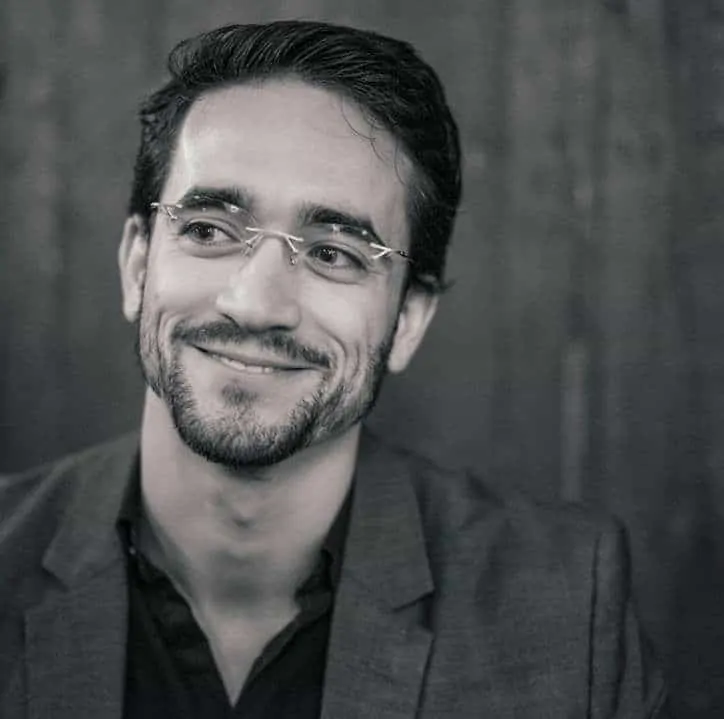
“I’ve lived in Japan on-and-off for the last five years, travelling to (almost) every corner of the Land of the Rising sun. I’ve deepened my love of the language with big hauls from Sapporo book stores, by chatting in Shinjuku coffee shops, drinking in Osaka “snack bars,” exploring distant Okinawan islands, and hitching rides with monks in Aomori. Japanese is a wide and deep language, and I’m always eager to dive in deeper.”

